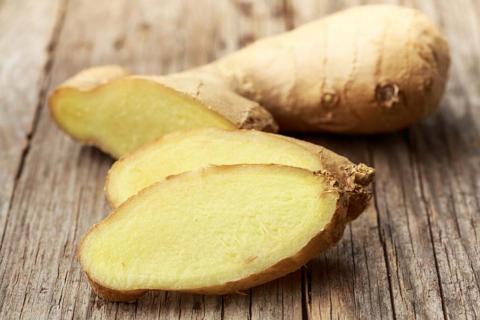Fresh, dried, pickled, preserved, crystallized, candied, powdered, or ground, ginger is used in many forms. In Ayurvedic traditions, it is used for its taste (rasa), energy (virya), and post-digestive effects (vipāka). But most importantly, its potent medicinal properties have earned it the name vishwabheshaja, “the universal medicine”.
Ginger comes from the same plant family as turmeric and cardamom. It’s indigenous to tropical Asia, yet the exact origins of ginger are uncertain because this spice does not grow in the wild.
At least 5,000 years ago, ancient Indian and Chinese people were using ginger in tonics to treat health issues. Scholars believe that it was used in prehistoric cooking before it became a popular medicine. The spice has been known by many names in its history; in Sanskrit it is srngaveram “horn root”, which is derived from its appearance, but the ancient Greeks called it ziggiberis, and Romans said zinziberi. The current English version of the name comes from the Middle English gingivere.
Ginger was exported from India at least 2,000 years ago when the Romans began to use in their medicine too. When the Roman Empire fell, Arab merchants took control of the ginger spice trade. The spice spread across Europe and by the 13th and 14th centuries, it was so highly valued that just one pound of ginger had the same cost as a sheep. In the Middle Ages, Europeans imported preserved ginger to use in their sweets. Stories say gingerbread, the popular Christmas treat, was invented by Queen Elizabeth I of England.
Ginger is still used in traditional medicine around the world today. Studies have revealed the spice has hundreds of compounds and metabolites and the purpose of some of them is still unknown. These components tend to accumulate in the digestive tract, providing evidence for why the spice is often used in treating gastrointestinal issues. It has also been studied to explore the antioxidant, anti-inflammatory, anti-nausea, anticarcinogenic, and disease preventing properties. The results are amazing.
Ginger is still used in traditional medicine around the world today. Ginger tea. (Public Domain)
Ginger is a proven potent anti-nausea agent and antioxidant. The ability to alleviate arthritis pain and swelling is mixed, but it has been shown to be effective in reducing cholesterol and improving lipid metabolism, making ginger useful in decreasing the risk of cardiovascular disease and diabetes. Studies have also shown no serious side effects with its moderate consumption, making it a good alternative medicine choice for most people. However, Ayurvedic medicine does warn that pregnant women, people with high blood pressure, gallstones, skin diseases, or peptic ulcers should limit their ginger intake.
In Ayurvedic medicine, ginger is said to be pungent, heating, and tonifying. Ayurveda practitioners say the spice can destroy toxins, improve digestion and prevent nausea, stop hiccups, remove hemorrhoids (piles), warm the body, fight fatigue, alleviate coughing and breathing problems, and ease pain. Many of these uses have been supported by Western scientific studies too.
Today, ginger is grown throughout humid tropical regions and India is still the major producer. As a key ingredient in many recipes and Ayurvedic medicine, ginger continues to be a valued part of Indian culture today.
Top image: Ginger root was an ancient ‘universal medicine’. (Public Domain)




